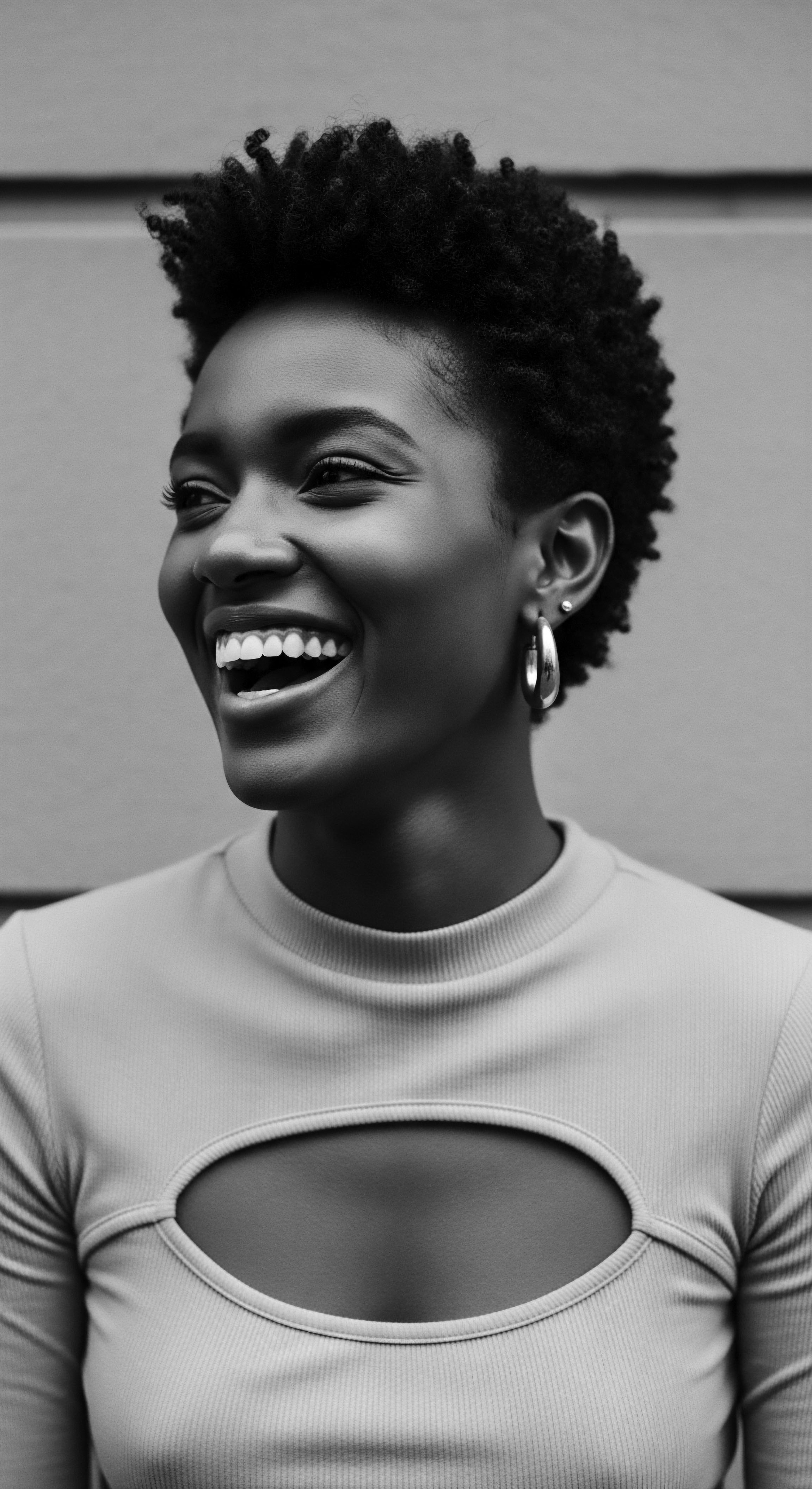
Roots
To journey into the heart of what the CROWN Act truly addresses, we must first listen to the whispers of heritage that coil within each strand of textured hair. This is not simply a legal act; it is a recognition, long overdue, of a living legacy, a defiance against centuries of imposed silence and systemic devaluation. For generations, the vibrant coil, the resilient loc, the intricate braid, has been more than adornment for Black and mixed-race communities. It has been a language, a map, a spiritual conduit, a marker of identity, and a repository of history itself.
Yet, this profound connection has been tragically misunderstood, dismissed, and, most painfully, punished in spaces that demand conformity to an alien aesthetic. The CROWN Act steps onto this ancient ground, attempting to mend a rupture, to affirm what ancestral wisdom has always known ❉ our hair is wholly, beautifully our own.

The Hair Follicle and Its Heritage
Our understanding of textured hair begins at its very source ❉ the follicle. Unlike the more cylindrical follicles often associated with Eurocentric hair types, those that birth coily and tightly curled strands tend to be elliptical or S-shaped, with a retro-curvature at the hair bulb. This unique structure influences the hair shaft’s elliptical cross-section and its characteristic high curvature. This curvature, while conferring a certain resilience and ability to retain voluminous styles, also renders the hair more susceptible to mechanical damage and breakage if handled improperly.
Ancestral practitioners understood this intrinsic nature, developing care rituals that respected the hair’s unique architecture long before microscopes revealed its secrets. They knew, through observation and inherited wisdom, that these strands thirsted for deep moisture and gentle handling.
The very biology of textured hair, then, becomes a point of historical contention. When Eurocentric beauty standards—prioritizing straight, long, and smooth hair—became the societal norm, the natural characteristics of Black hair were deemed “unruly,” “messy,” or “unprofessional.” This devaluation was not accidental; it served to justify dehumanization during the transatlantic slave trade and to enforce social hierarchies after slavery’s abolition. The CROWN Act, in its essence, challenges this deeply ingrained biological bias, affirming that the natural state of Black hair needs no apology or alteration to meet standards of human worth or professional competence.
The CROWN Act acknowledges a profound truth ❉ the inherent structure of textured hair, a heritage marker, has been unjustly weaponized as a tool of discrimination.

Language and Labeling Biases
Consider the lexicon of hair. Words like “nappy,” “kinky,” or “woolly” have long been used to describe Black hair, often with derogatory connotations, reflecting centuries of negative perceptions tied to slavery and dehumanization. These terms were not neutral descriptors; they were deployed to underscore a supposed difference, an “otherness,” classifying Afro-textured hair as closer to animal fur than human hair.
This linguistic assault on hair was a part of a broader systemic effort to strip away cultural identity. Even the term “dreadlocks” originally derived from slave traders describing Afro-textured hair as “dreadful” during the Middle Passage.
The CROWN Act directly counters this legacy of linguistic bias by explicitly protecting hair textures that are “coiled or tightly curled” and styles like “locs, cornrows, twists, braids, Bantu knots, Afros or any other hairstyle that is commonly associated with a race or national origin.” By naming and protecting these styles, the act reclaims and dignifies the ancestral language of Black hair, asserting its rightful place as a valid, professional, and beautiful expression of self.
The historical devaluation of Black hair manifested in policies that enforced conformity.
- The Comb Test ❉ After slavery, some organizations used a fine-tooth comb at their doors, denying entry if one’s hair could not be easily combed through.
- The Pencil Test ❉ During Apartheid in South Africa, a pencil was placed in a person’s hair; if it stayed, they were classified as Black, if it fell, they could be considered white.
- Tignon Laws ❉ In 18th-century Louisiana, free Black women were compelled to wear a tignon (head-covering) to conceal their elaborate hairstyles, which were seen as too enticing to white men, asserting a visual social marker between free Black women and white women.
These are not isolated incidents but reflections of a pervasive system that sought to control and diminish Black identity through hair. The CROWN Act stands as a legislative response to these historical attempts at policing Black bodies and cultural expression.
| Textured Hair Heritage Trait Coily/Kinky Texture (elliptical follicle) |
| Historical Eurocentric Perception "Unruly," "nappy," "unprofessional" |
| CROWN Act's Affirmation Protects natural hair texture |
| Textured Hair Heritage Trait Volume/Density (from tight coils) |
| Historical Eurocentric Perception "Messy," "distracting" |
| CROWN Act's Affirmation Recognizes and protects styles like Afros |
| Textured Hair Heritage Trait Protective Styles (braids, locs, twists) |
| Historical Eurocentric Perception "Extreme," "unprofessional," "unacceptable" |
| CROWN Act's Affirmation Explicitly protects braids, locs, twists |
| Textured Hair Heritage Trait This table illustrates the stark contrast between the inherent characteristics of textured hair, deeply rooted in ancestral heritage, and the biases they faced, now challenged by the CROWN Act. |

Ritual
The hair on our heads, particularly textured hair, has long served as a profound repository for meaning, tradition, and ritual across African cultures. These practices, passed through generations, were not mere acts of grooming; they were expressions of social standing, spiritual connection, and collective identity. They formed a tender thread, weaving individuals into the rich tapestry of their communities.
Yet, the brutal interruptions of enslavement and subsequent systemic racism sought to sever this connection, to dismantle the very ritual and meaning of Black hair. The CROWN Act acknowledges this historical assault on tradition, seeking to restore the dignity of these ancestral practices in modern spaces.

Hair as a Map and Message in Antiquity?
Before the shadows of forced migration fell upon the continent, African hairstyles communicated volumes. They served as a visual language, signaling age, marital status, social rank, tribal affiliation, and even spiritual beliefs. For instance, the Yoruba people of Nigeria crafted intricate styles, like the “Irun Kiko” (a thread-wrapping method), which spoke to femininity, marriage, and coming-of-age rites.
The Himba tribe in Namibia used red ochre paste on their dreadlocked styles, signifying their connection to the earth and their ancestors. These were not simply choices of aesthetics; they were living archives, each braid and twist a carefully constructed sentence in the grand narrative of a people.
The transatlantic slave trade, however, aimed to erase these profound cultural markers. Slave traders often shaved the heads of captives, a deliberate act of dehumanization designed to strip away their identities and sever their connection to homeland and heritage. Despite this horrific attempt at cultural annihilation, ancestral hair practices endured as acts of silent protest and resistance. For example, during enslavement, some African women, particularly rice farmers, braided rice seeds into their hair as a means for survival, carrying sustenance and culture with them to a new, hostile land.
Cornrows were also reportedly used to conceal maps for escape routes, turning hair into a clandestine communication system. These are stories of profound resilience, where the ritual of hair care became a subversive act of survival and cultural preservation.
The historical refusal to acknowledge Black hair as a site of profound cultural ritual is a bias the CROWN Act seeks to dismantle.
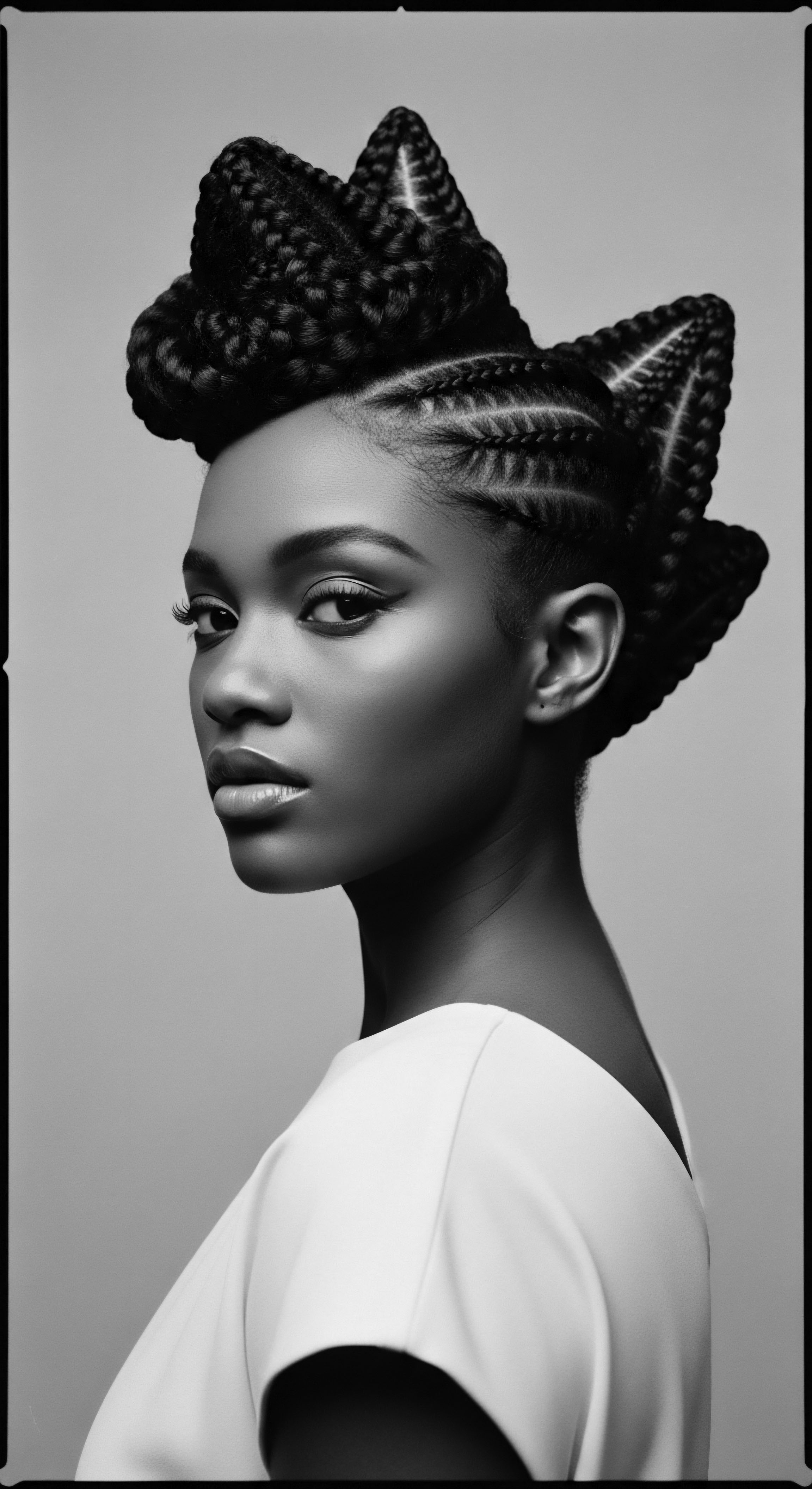
The Interruption of Cultural Norms
The post-slavery era introduced new forms of bias that further cemented Eurocentric beauty standards. The pressure to conform to these norms, often associated with social and economic advancement, led to the widespread adoption of chemical relaxers and hot combs. Straighter hair was deemed “good hair” and became a perceived requirement for opportunities, perpetuating the damaging idea that natural textures were “unkempt” or “unprofessional.” This systemic pressure had, and continues to have, a measurable psychological impact.
Black women, for instance, are 1.5 times more likely than other women to be sent home from work or know of a woman sent home due to her hairstyle, according to a 2019 study supported by Dove. This statistic offers a stark illustration of how deep the roots of hair discrimination run into the very fabric of professional and educational spaces, compelling individuals to chemically alter their natural hair to avoid such professional and social exclusion.
Consider the persistent pressures that compelled individuals away from their natural textures:
- Societal Acceptance ❉ Straightened hair was often seen as a gateway to social acceptance and opportunities in white-dominated spaces.
- Economic Opportunity ❉ Job offers were rescinded, and promotions denied, purely based on natural hairstyles, creating direct economic disparities.
- Internalized Bias ❉ Generations were socialized to believe that Eurocentric features represented the standard of beauty, leading to internalized negative perceptions of their own hair.

Reclaiming the Stylist’s Hand
The CROWN Act directly challenges the notion that certain hairstyles, particularly those historically worn by Black individuals, are “unprofessional” or “distracting” in workplaces and schools. By legally protecting styles such as braids, locs, twists, and Afros, the act supports the reclamation of ancestral styling practices. It recognizes that these styles are not trends but deeply rooted expressions of cultural heritage. The act implicitly validates the intricate artistry and communal significance that has always surrounded Black hair care—a practice that historically served as a space for bonding, storytelling, and the transmission of knowledge across generations.
The psychological harm caused by hair discrimination is significant. It can lead to anxiety, lowered self-esteem, cultural disconnection, and chronic stress. The CROWN Act aims to mitigate these harms by offering legal recourse and fostering environments where Black individuals can wear their natural hair with pride and without fear of reprisal. It allows the tender thread of heritage, once so deliberately frayed, to be rewoven into the fabric of everyday life, asserting a profound right to self-expression rooted in a rich ancestral past.
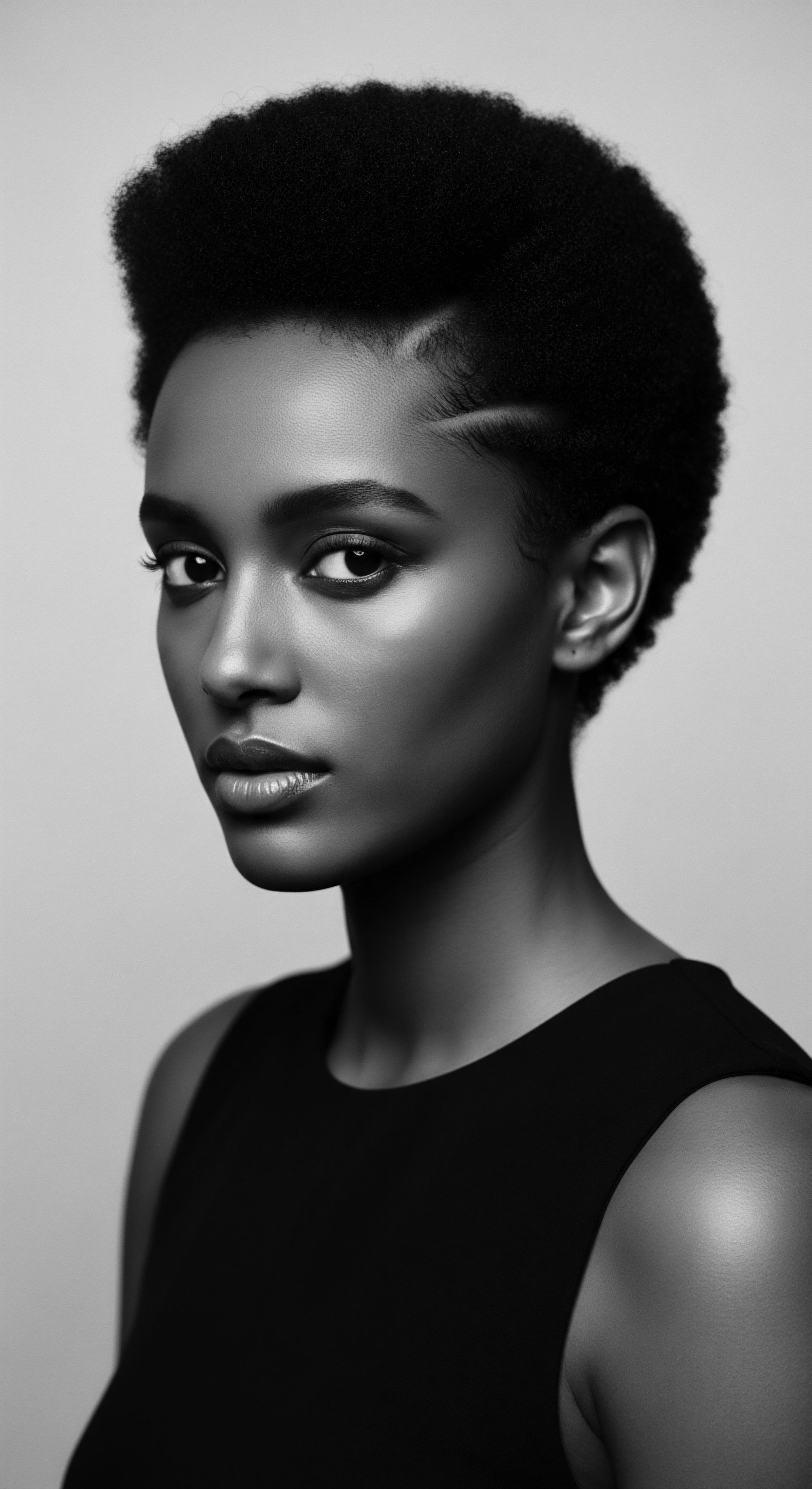
Relay
The journey of textured hair, from ancient communal styling rituals to modern battles for recognition, represents a relay of resilience across generations. Each historical bias, a hurdle placed in the path of self-acceptance, reveals the deep-seated societal constructions of beauty and professionalism that have long disadvantaged Black and mixed-race communities. The CROWN Act, in its legislative attempt to dismantle these biases, carries forward a legacy of resistance, drawing upon centuries of ancestral wisdom and contemporary understanding to chart a course for genuine equity. This act is a testament to the enduring power of heritage and the necessity of confronting systems that sought to diminish it.
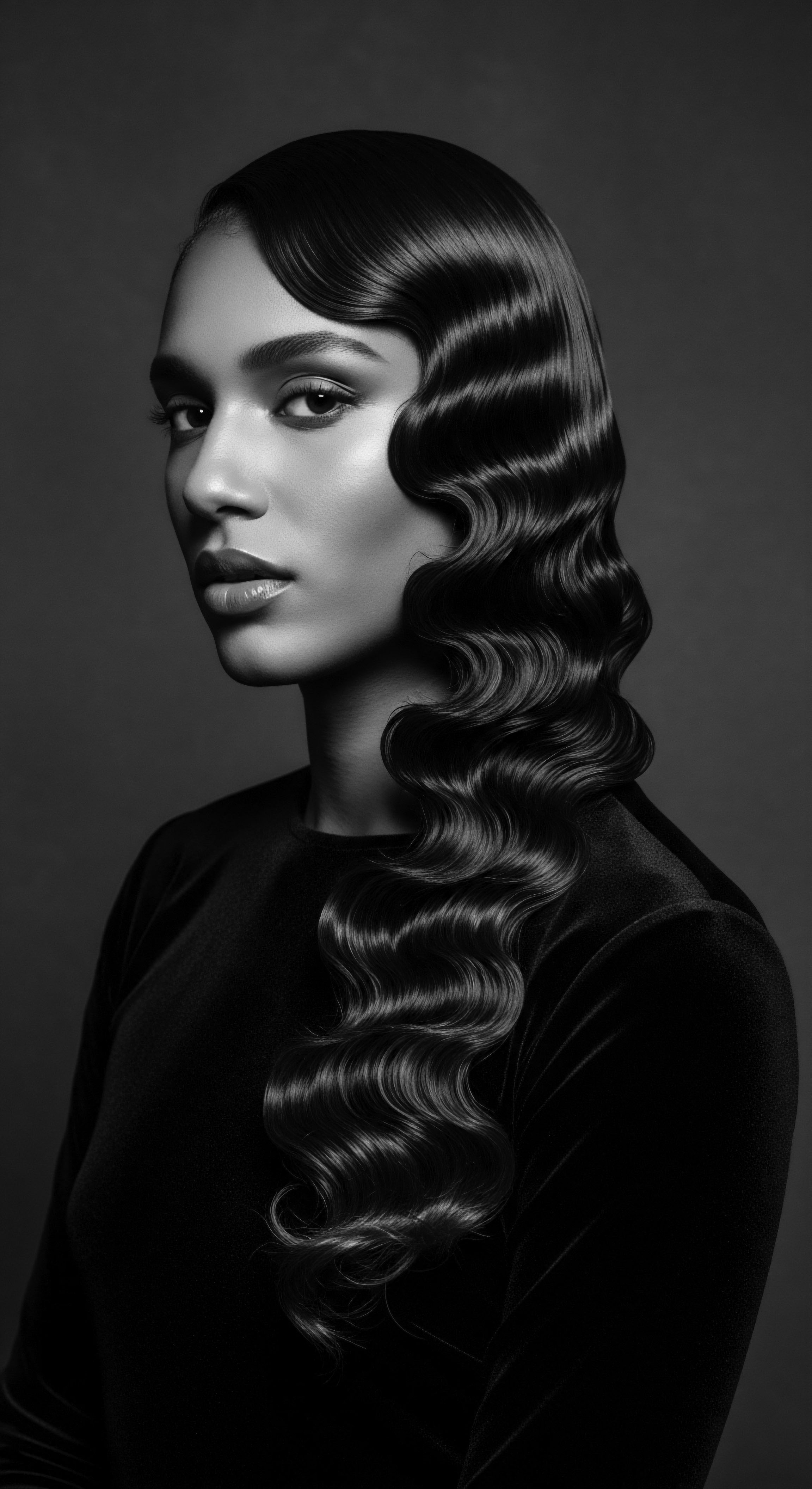
Evolution of Legal Challenges
The path to the CROWN Act has been long and fraught with legal complexities, demonstrating how deeply hair discrimination was embedded within legal frameworks. Early interpretations of civil rights legislation often failed to extend protections to hair discrimination. For example, while the Civil Rights Act of 1964 prohibited employment discrimination based on race, courts frequently debated whether hair discrimination constituted racial bias.
A key legal challenge emerged in 1981 with the case of Rogers v. American Airlines. A Black woman took American Airlines to court because the company prohibited her from wearing braids. The court sided with the airline, reasoning that braids were not an immutable racial characteristic, unlike an Afro.
This ruling set a precedent for decades, legally upholding corporations’ rights to ban braided hairstyles in the workplace. This legal stance underscored a fundamental misunderstanding, or perhaps a deliberate sidestepping, of how deeply intertwined hair is with Black racial identity and heritage. Such rulings forced individuals to choose between their cultural expression and their livelihoods, contributing to significant economic disparities and psychological distress.
The CROWN Act seeks to correct decades of legal oversight that failed to recognize hair as a central component of racial identity.
The reintroduction of the CROWN Act in Congress, after passing the House but being blocked in the Senate multiple times, underscores the ongoing struggle. Lawmakers who oppose the bill often argue that existing laws banning race-based discrimination already apply. This perspective ignores the specific nature of hair discrimination, which has historically found loopholes in broader anti-discrimination statutes. The CROWN Act specifically names and protects styles like Locs, Cornrows, Twists, Braids, and Bantu Knots, directly addressing this historical oversight.
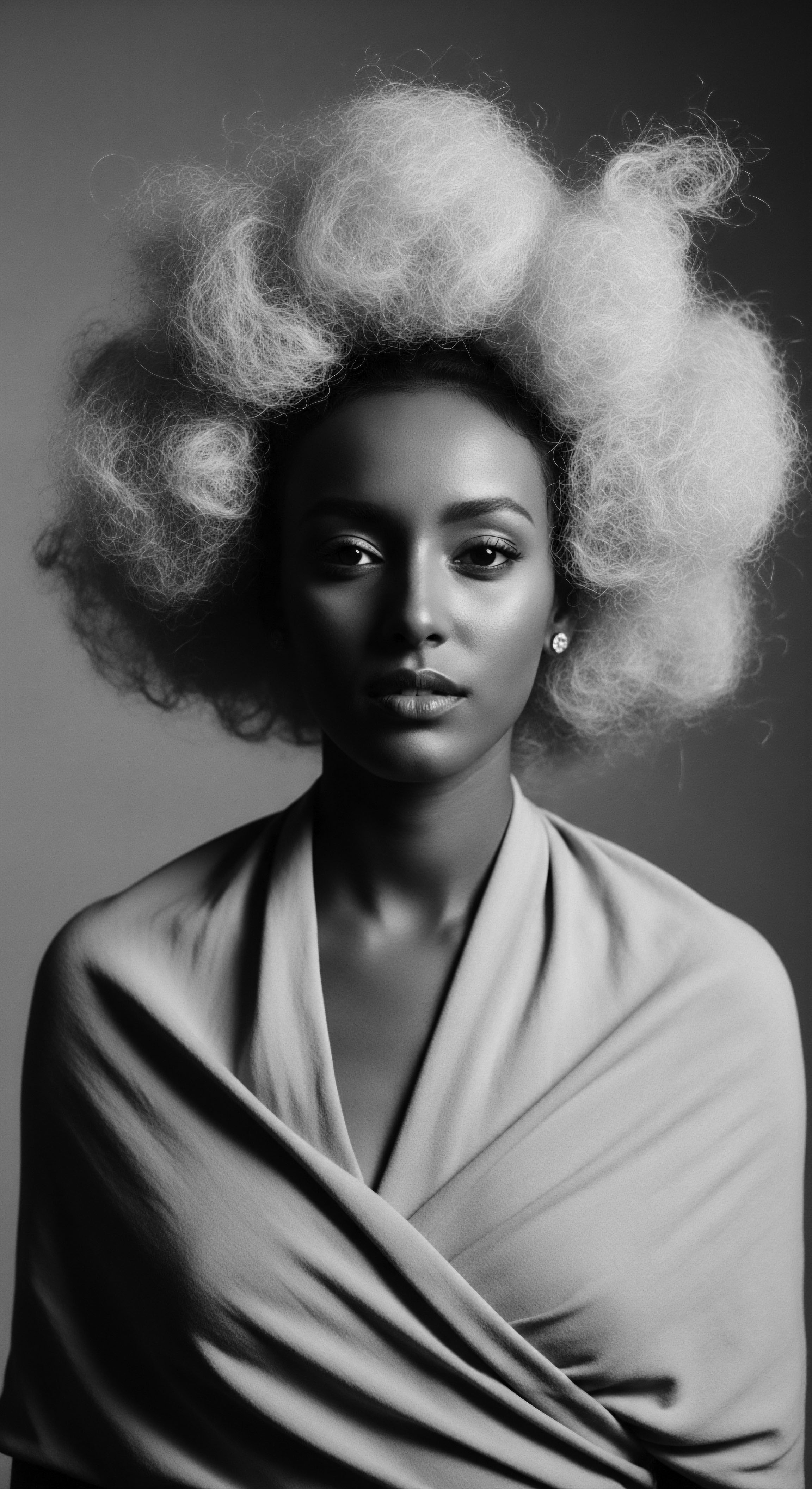
The Psychological and Economic Cost of Bias
The biases addressed by the CROWN Act have tangible, painful consequences beyond the symbolic. Psychologically, consistent exposure to messages that label one’s natural hair as “unprofessional” or “unacceptable” can internalize negative stereotypes, leading to reduced self-esteem, anxiety, and even chronic stress. Research from the Perception Institute’s 2016 “Good Hair” study indicated that a majority of people, regardless of race, hold some bias toward Black women and their hair.
A 2020 Duke University study further found that Black women with natural hairstyles were perceived as less professional and less competent, and were less likely to be recommended for job interviews than candidates with straight hair. These findings highlight a systemic issue that impacts career advancement and educational opportunities.
Economically, the pressure to conform can be substantial. Black women spend disproportionately more on hair care and products, often including costly and damaging chemical treatments to achieve straightened looks. Job loss or rescinded offers due to hair discrimination directly impact financial stability and perpetuate socioeconomic inequalities. The case of Chasity Jones, whose job offer was rescinded because she refused to cut her locs, illustrates this direct economic harm.
While the Equal Employment Opportunity Commission (EEOC) filed a lawsuit on her behalf, the Eleventh Circuit Court of Appeals ultimately upheld the district court’s ruling in favor of the employer, reinforcing the urgent need for legislation like the CROWN Act. This historical example clearly illuminates the direct connection between racial bias against textured hair and its severe, measurable impact on the individual’s economic well-being and life trajectory (Jones, 2016).
| Bias Mechanism Dehumanization/Othering |
| Historical Manifestation (Pre-CROWN Act) Forced head shaving during enslavement; comparison to "wool" or "cotton" |
| Contemporary Impact (Even with CROWN Act Efforts) Persistent microaggressions, unwanted touching of hair, perpetuating "them vs. us" mentality |
| Bias Mechanism Professionalism Standards |
| Historical Manifestation (Pre-CROWN Act) "Comb Test" and "Pencil Test" as barriers to entry; formal policies against "extreme" styles |
| Contemporary Impact (Even with CROWN Act Efforts) Black women 1.5x more likely to be sent home from work due to hair; perceived as less competent in job interviews |
| Bias Mechanism Economic Disparity |
| Historical Manifestation (Pre-CROWN Act) Forced chemical treatments; job loss/denial (e.g. Chasity Jones case) |
| Contemporary Impact (Even with CROWN Act Efforts) Higher spending on hair care to conform; limited career advancement |
| Bias Mechanism This table illustrates the historical continuum of biases against Black hair, highlighting how past discriminatory practices resonate in contemporary challenges, making the CROWN Act a vital legislative tool. |
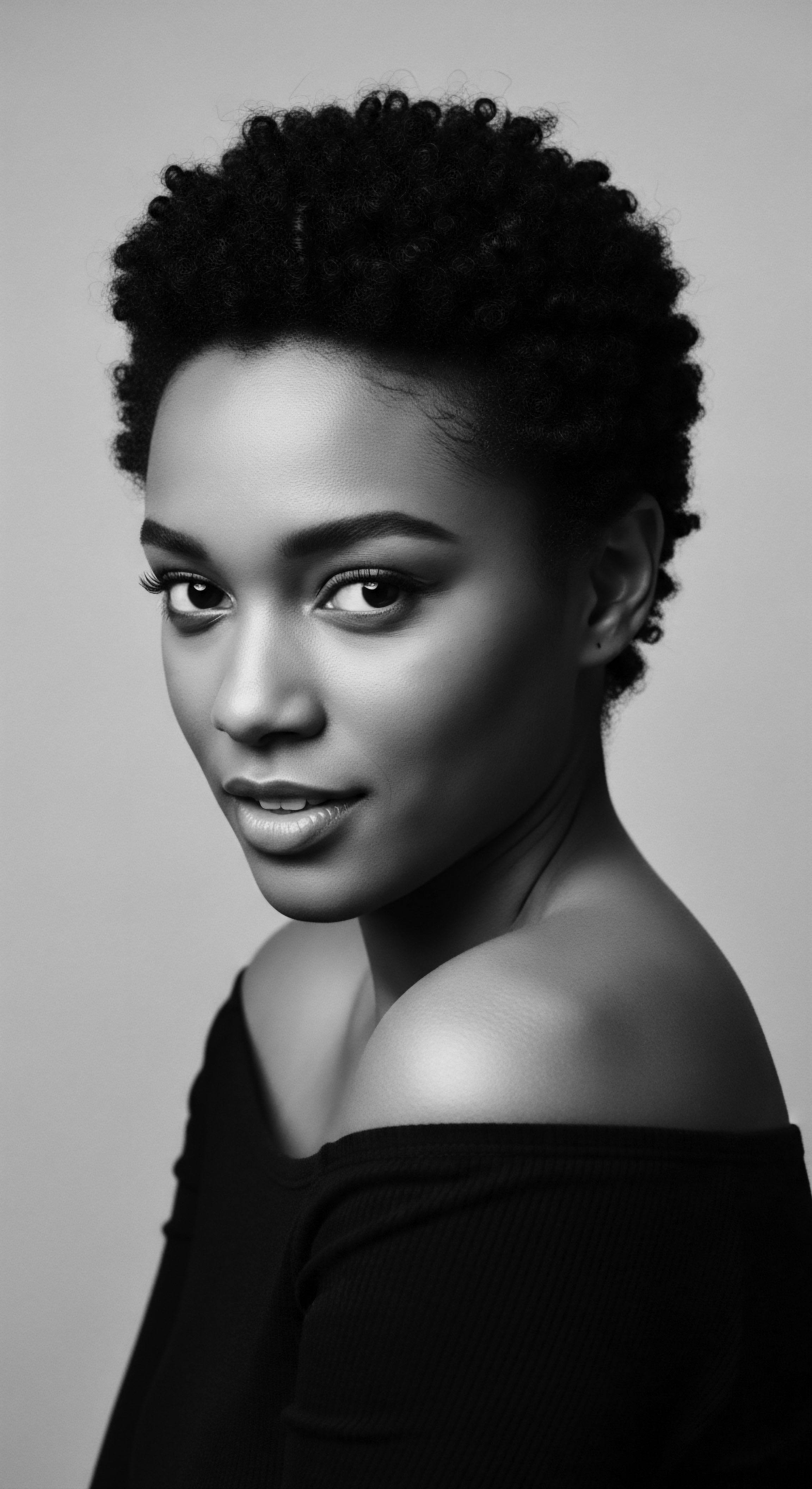
Unbound Helix ❉ A Future Reimagined?
The CROWN Act, while not yet a federal law, represents a significant step in recognizing and rectifying these historical wrongs. It moves beyond simply banning discrimination; it explicitly protects hair textures and styles linked to racial identity. This legislative action signals a societal shift towards affirming diverse beauty standards rooted in heritage. It acknowledges that true inclusivity requires dismantling the very structures that have historically marginalized Black hair.
What challenges persist for hair freedom?
- Implementation and Enforcement ❉ Despite state-level CROWN Acts, consistent enforcement and awareness remain hurdles.
- Implicit Bias ❉ The act addresses explicit discrimination, but implicit biases—subtle, unconscious judgments—still influence perceptions.
- Global Reach ❉ Hair discrimination rooted in Eurocentric norms extends beyond the United States, requiring broader cultural shifts.
The spirit of the CROWN Act is one of liberation, allowing individuals to embrace their natural hair, a profound connection to their ancestral lineage, without fear of professional or social penalty. It allows the vibrant, diverse expressions of Black hair, once suppressed, to flourish openly, honoring the resilience and creativity that have defined this heritage for centuries. This act is not an endpoint, but a powerful continuation of the relay, passing the baton of self-affirmation and cultural pride to future generations.

Reflection
As we close this dialogue on the CROWN Act and its deep engagement with the biases against Black hair, we find ourselves standing at a compelling crossroads. Our journey has traced the elemental biology of textured hair, echoing ancient wisdom that saw it as sacred, a vital channel to the divine and a communicator of one’s very being. We have witnessed how the tender thread of communal care rituals transformed into clandestine acts of survival under the brutal weight of enslavement, and how these traditions persisted despite relentless efforts to diminish them.
Then, we charted the intricate relay of modern legal battles, recognizing the enduring struggle for liberation, a struggle that culminates, in part, with the CROWN Act. This act, then, is more than a legal decree; it serves as a resonant affirmation of the Black hair story, a story of resistance, innovation, and self-possession.
The essence of Roothea’s “Soul of a Strand” lies in this profound understanding ❉ that every coil, every loc, every braid carries the whispers of ancestors, the triumphs of communities, and the boundless potential of self-definition. The biases the CROWN Act addresses are not abstract concepts; they are the inherited weight of centuries, pressures that sought to sever a people from their inherent beauty and the vibrant expressions of their heritage. By pushing back against the notion that textured hair is somehow “unprofessional” or “unfit” for mainstream spaces, the CROWN Act helps cultivate an environment where the full spectrum of Black and mixed-race hair heritage can simply exist, visibly, beautifully, and without compromise.
It reinforces that our hair, in its natural glory and its protective styles, is a profound statement of identity, a celebration of ancestral lines, and a powerful, living archive for generations to come. The work continues, but the ground shifts, allowing our inherent radiance to shine, unbound.
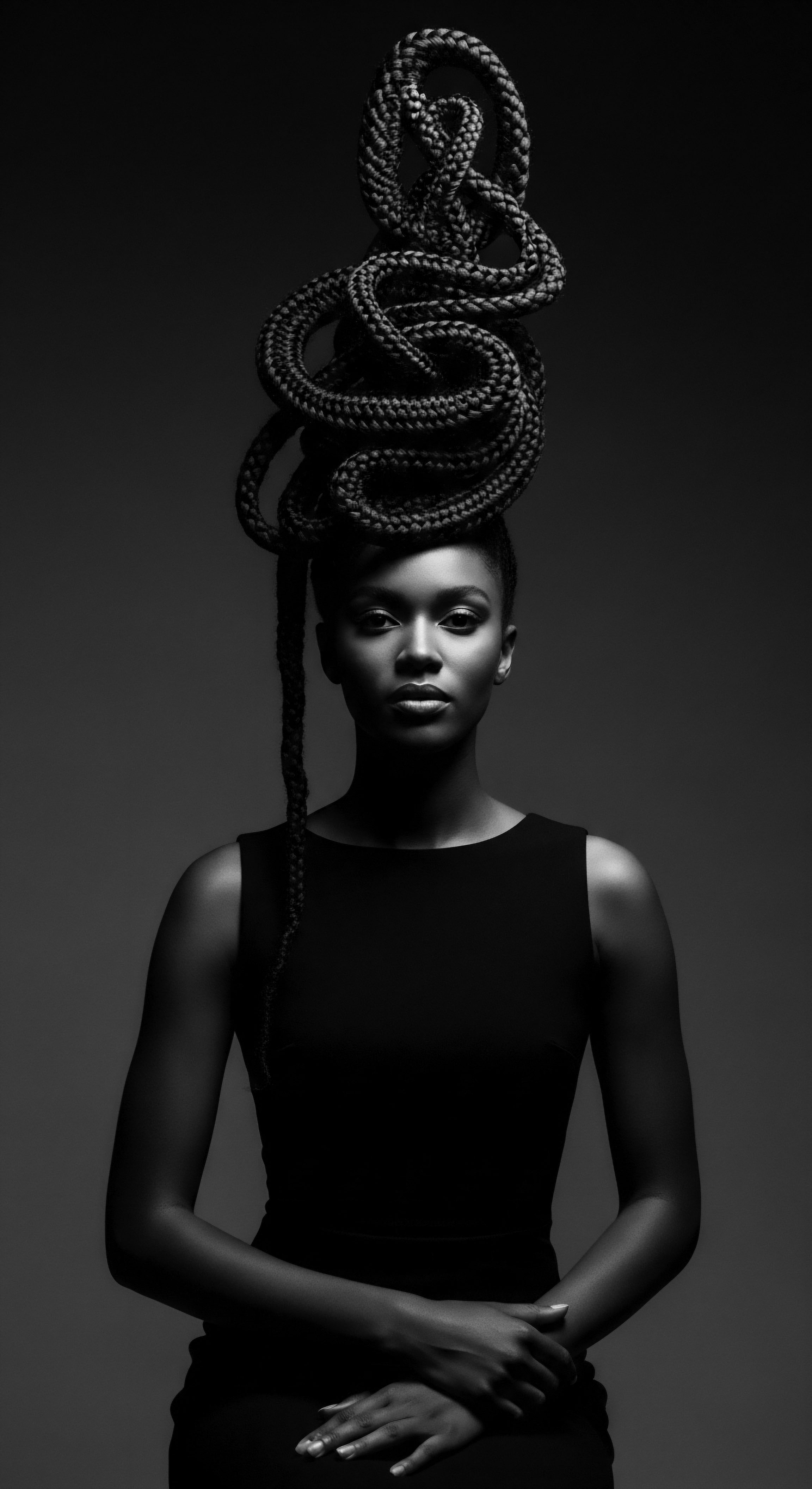
References
- Bencosme, Yamilex. “Beauty is Pain ❉ Black Women’s Identity and Their Struggle with Embracing.” University of New Hampshire Scholars Repository, 2017.
- Byrd, Ayana, and Lori Tharps. Hair Story ❉ Untangling the Roots of Black Hair in America. St. Martin’s Press, 2001.
- Caldwell, Paulette. “A Hair Piece ❉ Perspectives on the Intersection of Race and Gender.” Duke Law Journal, vol. 1991, no. 2, 1991, pp. 365-396.
- Caffrey, Cait. “Afro-textured hair.” EBSCO Research Starters, 2023.
- Opie, Tamika L. and Deborah W. Phillips. “The Effects of Afrocentric Hairstyles on Perceptions of Professionalism and Dominance in the Workplace.” Social Psychological and Personality Science, 2015. (Referenced in NCDA)
- Powell, Lisa. “Why Natural Hair is Good Hair ❉ The CROWN Act and Ending Hair Discrimination in the Workplace.” NCDA, 2021.
- Randle, Janel. “Black Hair, Black Beauty and The Brainwashing of African American Women.” Journal of African American Studies, 2015. (Referenced in Bencosme)
- Robinson, C. “Good Hair” ❉ Examining the Cultural and Psychological Significance of Hair for Black Women. Journal of Black Psychology, 2011. (Referenced in Bencosme)
- Russell, Kathy, Midge Wilson, and Ronald Hall. The Color Complex ❉ The Politics of Skin Color Among African Americans. Anchor Books, 1992. (Referenced in Moses)
- White, Jacqueline. “Black Women and Their Hair ❉ An Exploration of Historical and Cultural Meanings.” Journal of Black Studies, 2005. (Referenced in Bencosme)
